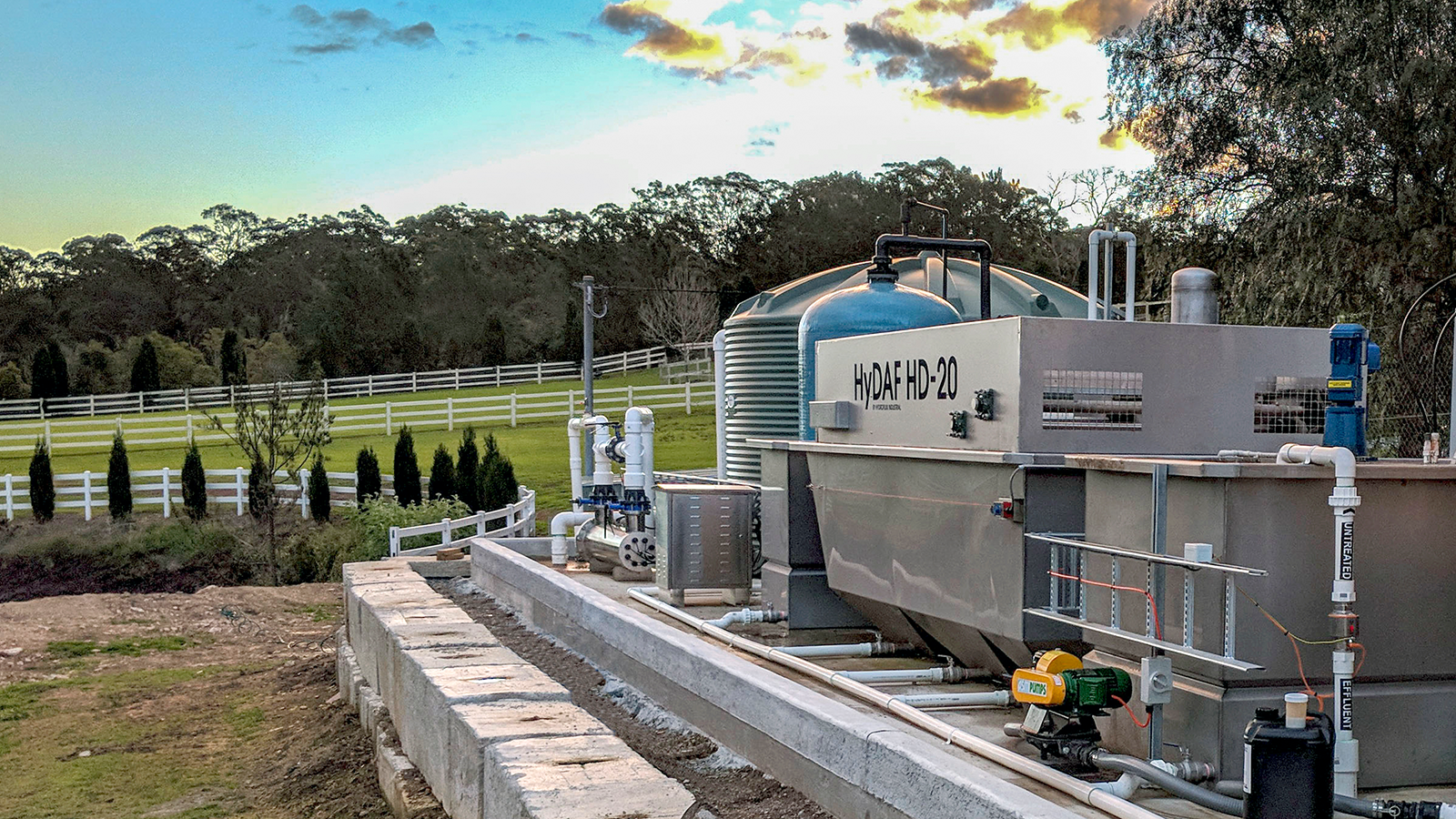
Our Solutions
The Hydroflux HyDAF dissolved air flotation system is ideally suited to treat wastewater from all types of meat and poultry operations.
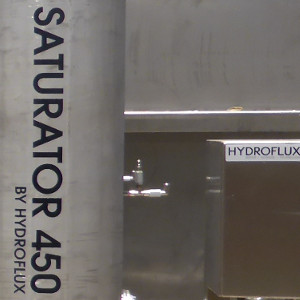
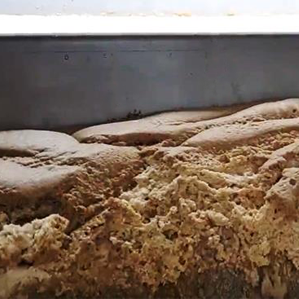
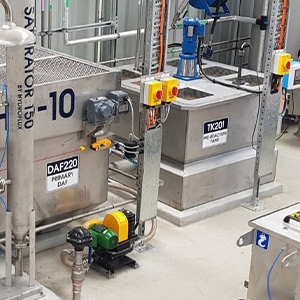
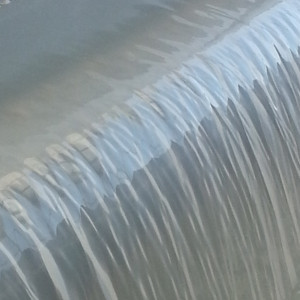
Dissolved air flotation units are extensively used within the meat and poultry processing industries. The effectiveness of a DAF system depends on a number of factors including whether or not chemicals are being dosed. Sometimes, particularly in the red meat sector, DAF systems can be installed to treat the green and the red streams separately which allows recovery of fat as a saleable tallow.
The efficiency of the fat removal in a dissolved air flotation plant when treating wastewater from meat and poultry operations is reduced if the temperature of the water is too hot. The increase in fat removal and recovery by reducing the wastewater temperature from 50 to 35 degrees C can be up to 50%, so heat exchangers can play a vital part in terms of DAF performance or recovery of fat.
Coagulation and flocculation is traditionally used in conjunction with a dissolved air flotation system across the meat and poultry sectors. Dosing of chemicals (at the correct pH) can significantly improve the performance of a DAF system. Historically ferric chloride is used to precipitate proteins and polymers used to aid the coagulation process, however with advances in polymer design, a high dose of polymer can be almost as effective at a considerably lower cost, with a further benefit of generating less sludge. BOD reductions of 80% or more can be achieved with a suitable chemical program with over 98% reduction in solids and grease for primary slaughtering plants.
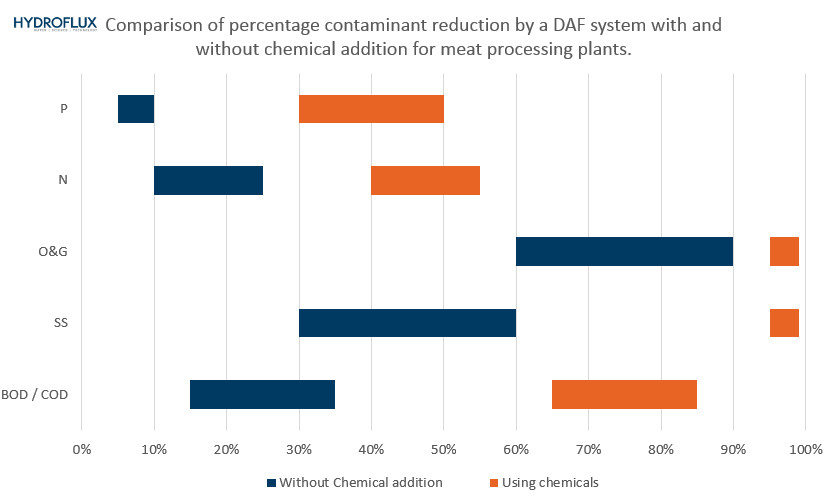
Another important aspect to consider is the speed in which the wastewater is treated in the DAF. When wastewater is treated quickly, less ammonical nitrogen is formed and thus the DAF system can remove quite significant amounts of nitrogen. Up to 60% is possible in some cases.
Click here to go to Your Wastewater
